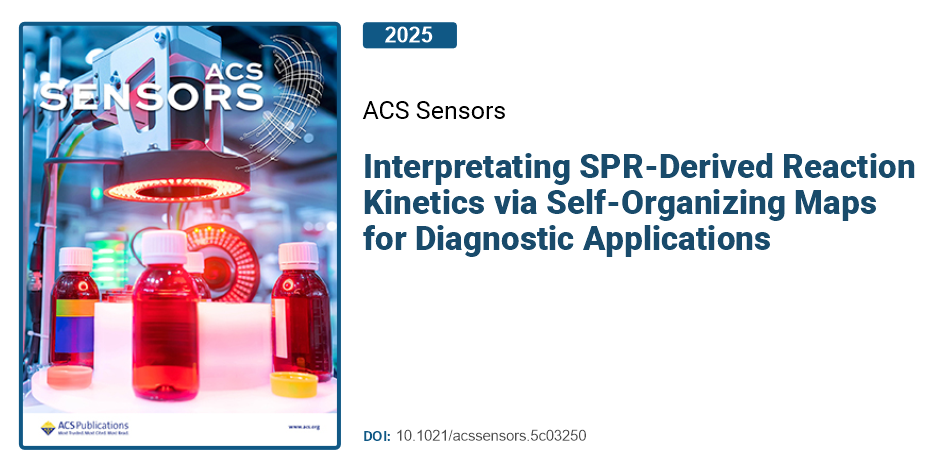Interpretating SPR-Derived Reaction Kinetics via Self-Organizing Maps for Diagnostic Applications
Jaqueline Volpe, Floriatan S. Costa, Beatriz Sachuk, Isabela Camilo, Angélica Faria, Hélida M. de Andrade, Saimon M. Silva e Dênio Souto
Artigo de acesso aberto (Texto completo disponível)
Impacto social
Inovação em diagnóstico: A integração de biossensores baseados em ressonância plasmônica de superfície (SPR) com mapas auto-organizáveis (SOM, self-organizing maps) possibilitará análise mais rápida e automatizada.
Detecção rápida e acessível: A tecnologia proposta possibilita diagnóstico em menos de 15 minutos, com alta precisão mesmo em matrizes complexas da leishmaniose visceral canina (CVL).
Aplicabilidade em regiões com poucos recursos: O método reduz a dependência de infraestrutura laboratorial complexa e de profissionais altamente especializados, tornando-se viável para ambientes remotos ou com limitações econômicas.
ODS
ODS 3 – Saúde e Bem-Estar: Contribui para o diagnóstico precoce e eficaz de doenças negligenciadas, impactando tanto a saúde animal quanto a humana.
ODS 9 – Indústria, Inovação e Infraestrutura: Impulsiona o desenvolvimento de biossensores integrados a ferramentas de inteligência artificial, promovendo inovação tecnológica em diagnóstico biomédico.
ODS 10 – Redução das Desigualdades: Oferece uma alternativa diagnóstica acessível para regiões endêmicas e de baixa renda, onde a infraestrutura laboratorial é limitada.
Resumo
Biosensors emerge as promising, cost-effective infectious disease diagnostics in resource-limited settings, requiring neither laboratory infrastructure nor specialized personnel. Surface plasmon resonance (SPR)-based biosensors remain preeminent for label-free, real-time analysis of biological interactions and kinetic parameter determination. Integrating Artificial Intelligence (AI), particularly self-organizing maps (SOMs), automates infection screening by projecting high-dimensional data onto topology-preserving 2D maps, offering advantages in diagnostic strategies by enabling efficient classification of infected vs healthy patients. This study presents an SPR biosensor with SOM analysis to enhance serodiagnosis of canine visceral leishmaniasis (CVL), a neglected tropical disease, whose delayed and inadequate detection in human and canine populations compromises effective disease control. The reaction kinetics of PQ20, a multiepitope chimeric protein with 20 B- and T-cell epitopes, with anti-PQ20 was evaluated. The proposed mechanism suggests two immunodominant epitopes of PQ20 through its reaction with polyclonal antibodies of Leishmania chagasi, presenting high initial association rates (ka1 = 2.4 × 105 L mol–1 s–1; kd1 = 5.5 × 10–4 L mol–1 s–1). The biosensor’s diagnostic performance was evaluated, achieving a 5.1 nmol L–1 detection limit. SOM clustering indicated a higher specificity at shorter reaction times, supporting reduced diagnostic timelines (100 s) in accordance with kinetic evaluation. Finally, SOM-based data interpretation improved sensitivity and specificity compared to univariate analysis in raw serum, enhancing the assay’s ability to classify samples in more complex media, in less than 15 min analysis time. Integrating multiepitope bioreceptors with AI-driven analysis offers rapid and label-free CVL surveillance, with broader applications for the management of this infectious disease.

